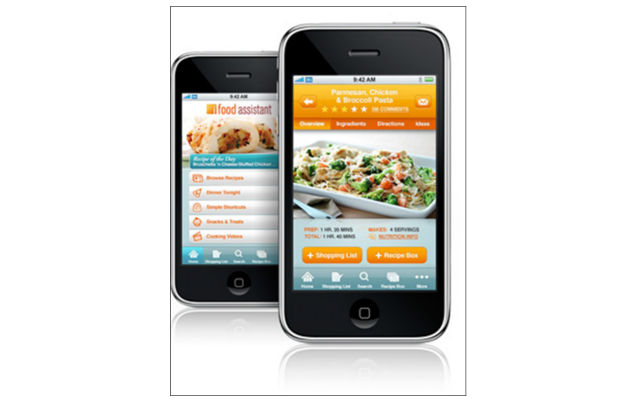Krafty and Wal*Smart?

There are two very interesting net-centric marketing developments for in the B2C world that have made the trade press recently.
The Kraft iPhone Assistant is available through iTunes and allows users to view recipes (using Kraft products of course), save favorite recipes, watch a cooking video, create shopping lists, find stores, and even get offers or incentives from participating stores. All this while seeing ads for Kraft products. It is currently in the top 100 list of favorite downloaded apps for the Apple iPhone.
Launched last fall, Walmart’s Walmart Smart Network is an IPTV-based network already deployed in 300 stores and will expand to 2,700 stores by the end of next year, with a total of about 27,000 in-aisle screens. By utilizing response measurement and message optimization technologies, this network will be able to deliver timely, relevant content to shoppers and can be segmented by day of the week, by time of day, by store, and by screen,. Content about products in the store can be customized for a shopper at the shelf location so they can make a quick decision to purchase. Response measurement, learning, and message optimization technologies were developed by DS-IQ.
While the iPhone Assistant may be useful to a consumer trying to plan a meal or understand how to cook something, ultimately it can’t be as useful at the store if that consumer is using it as a mobile phone while shopping or busy switching between other applications on the iPhone. Was it intended to be a point-of-sale or “shopper marketing” tool while in a retail environment? Will customers be as loyal to the Kraft brand when presented with other offers in a store aisle out of Kraft’s control? What if ConAgra or Nestlé come out with their own application? Will customers want to switch apps because of specific products? The good news is that for now, Kraft marketers can accumulate a great amount of data that they can use to understand consumer preferences and behavior.
On the other hand, is the Walmart Smart Network really that “smart” if it can’t customize based on the individual shopper? By associating aggregate store sales with messages delivered within the store, the technology can truly enable optimization; however, without interactivity, “customization” of messaging is not “personalization” of messaging. Will a shopper be more influenced by an informative or slick video to buy a different brand than merely seing a lower price on that other brand? What about languages? With 150 million visitors to Walmart each week, is personalization and CRM even possible or necessary? Besides optimization, can data gathered from sales be used for any other predictive analysis?
It will be interesting to see how these tools are being accepted a year from now. While they are net centric marketing applications, there eventually will be a better way to engage customers closer to the point of sale than what today’s “state of the art” technology offers.
